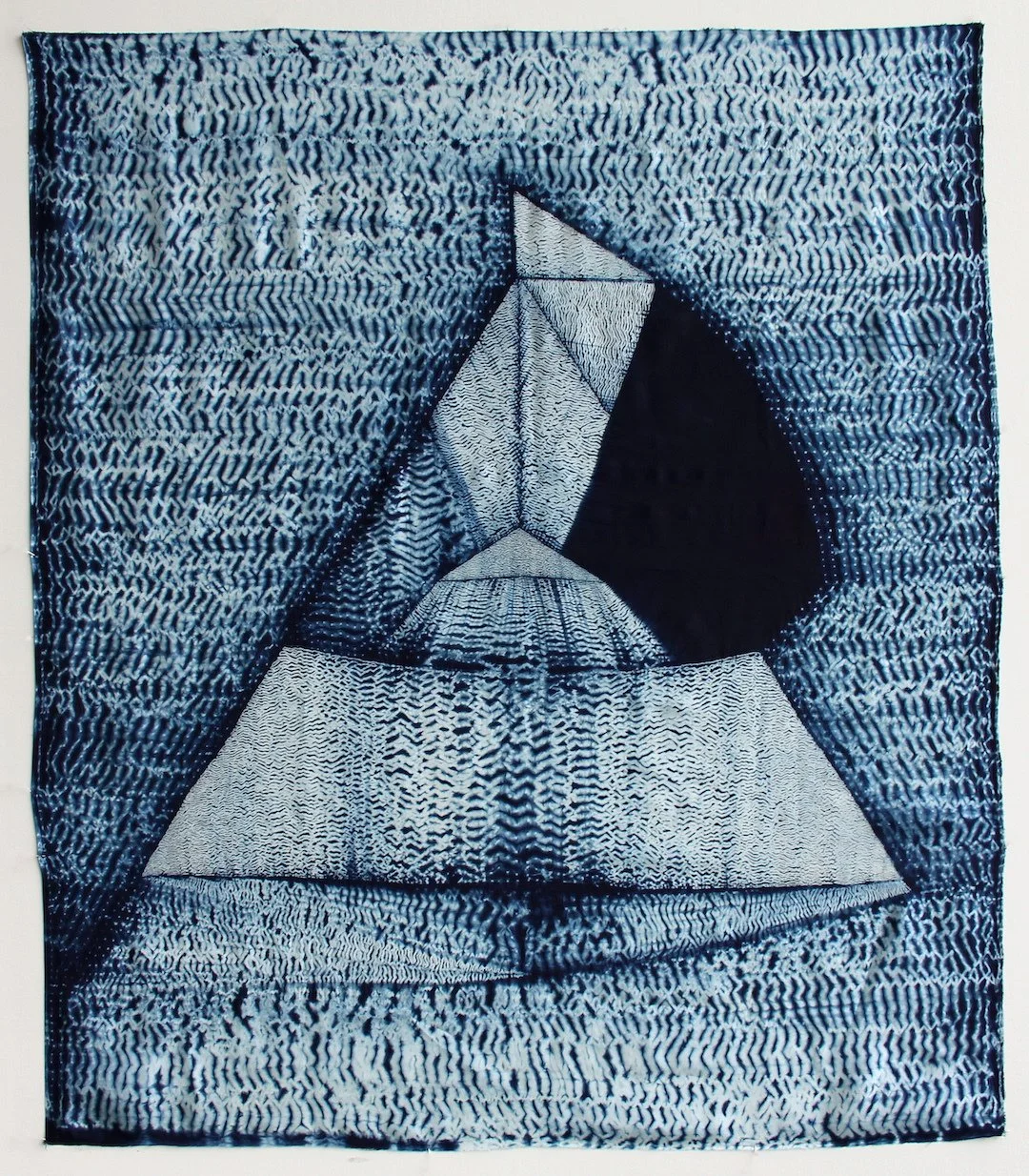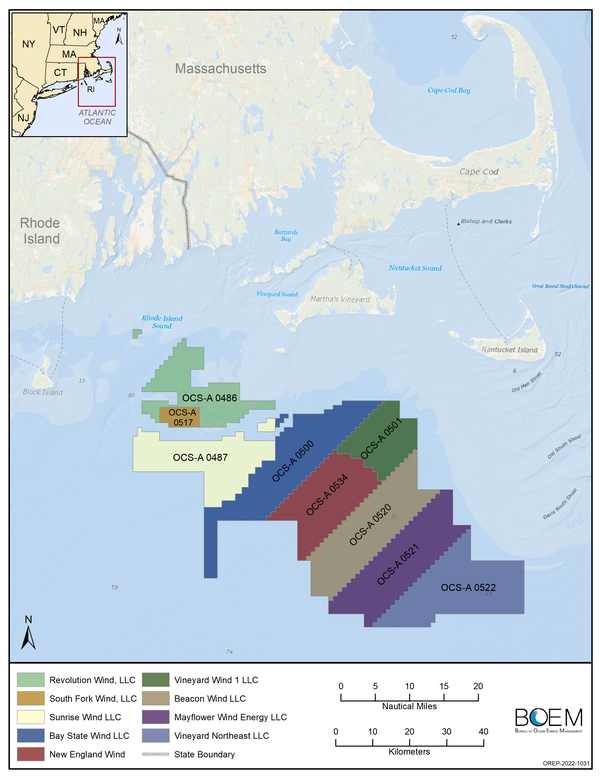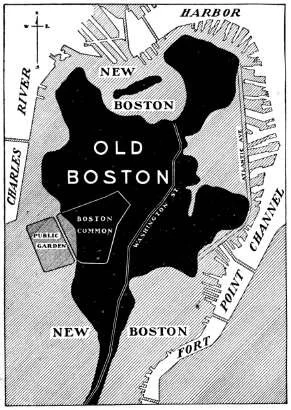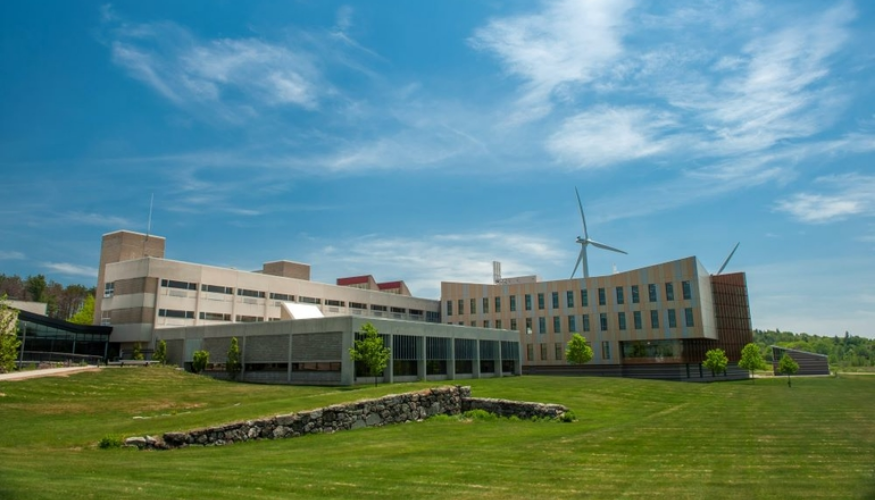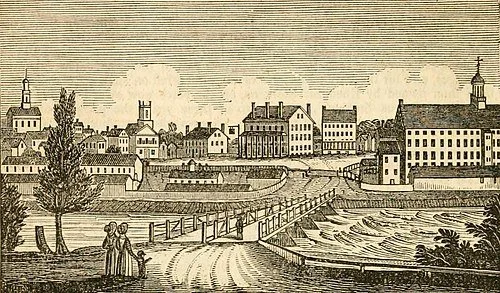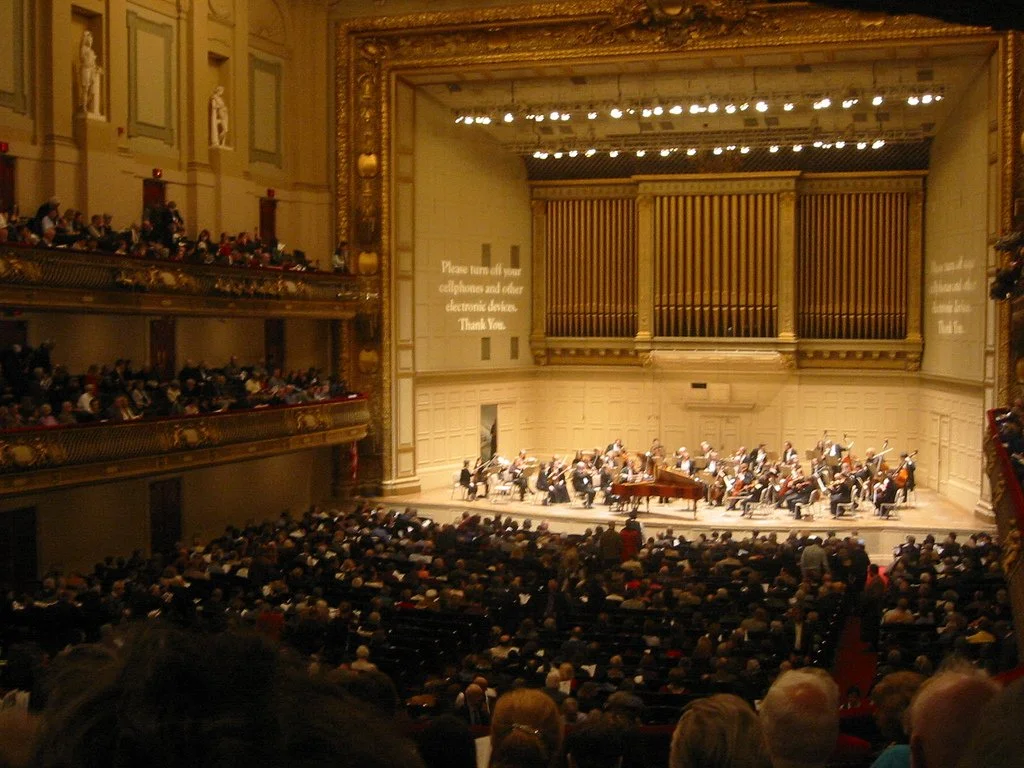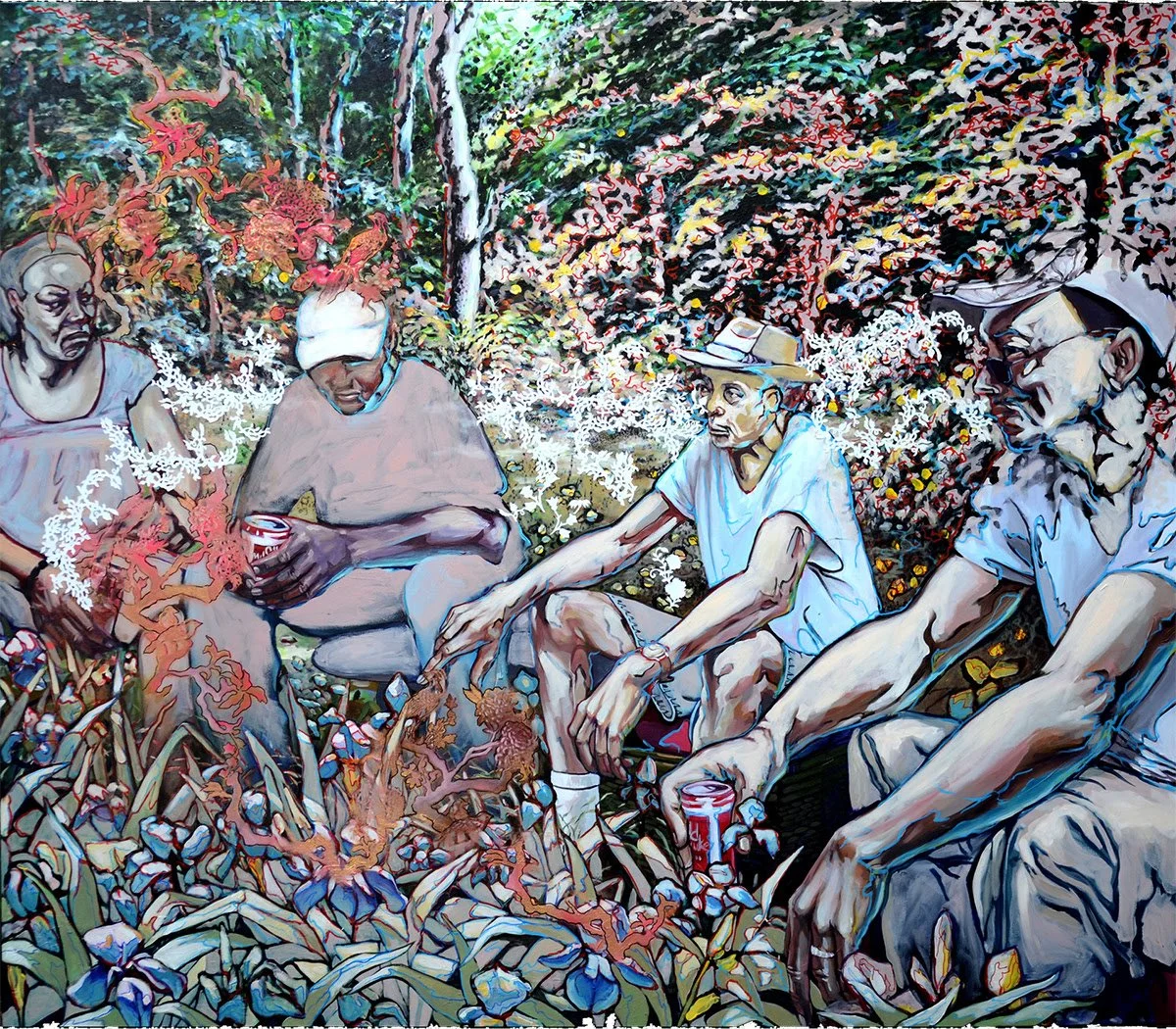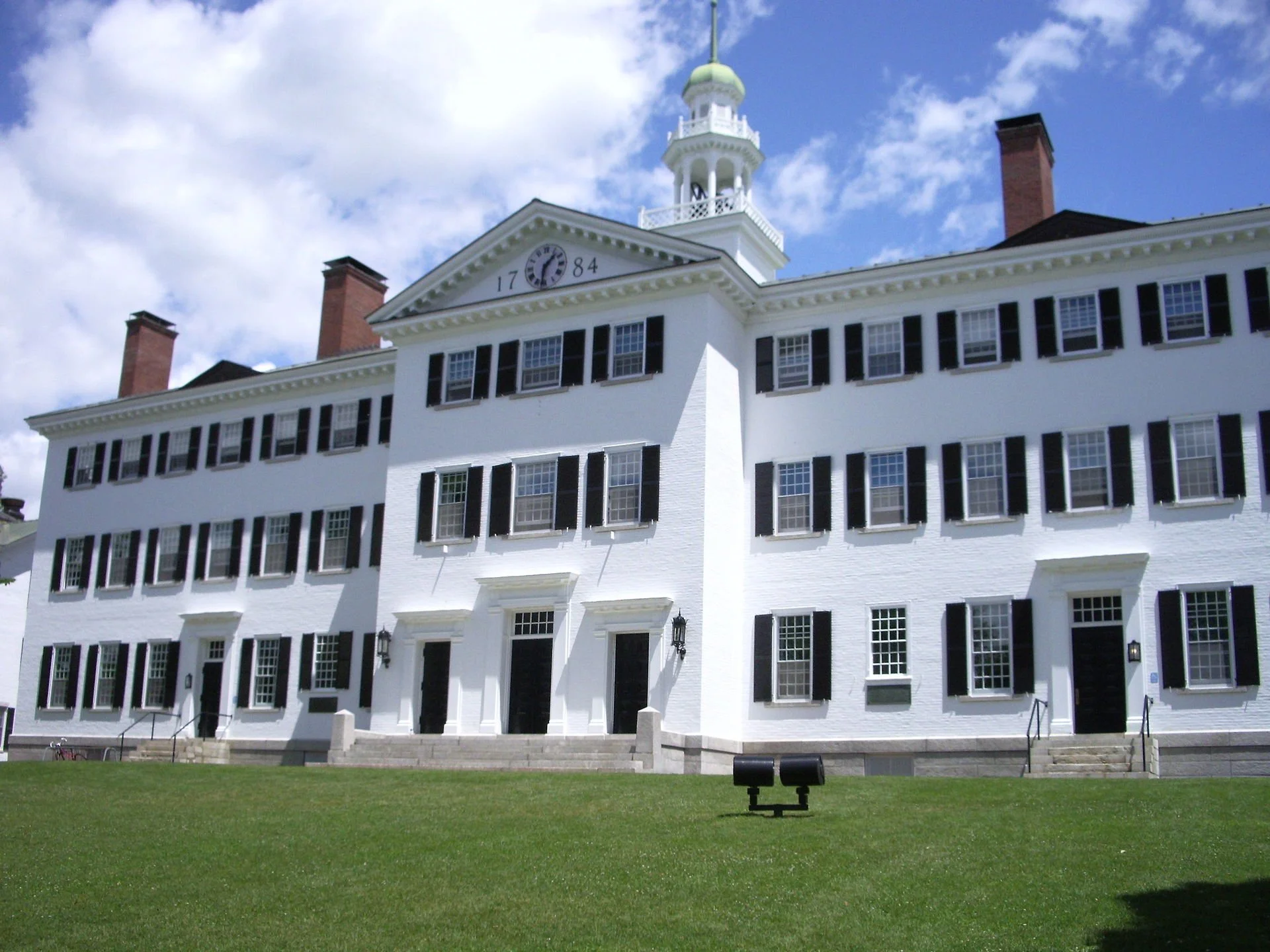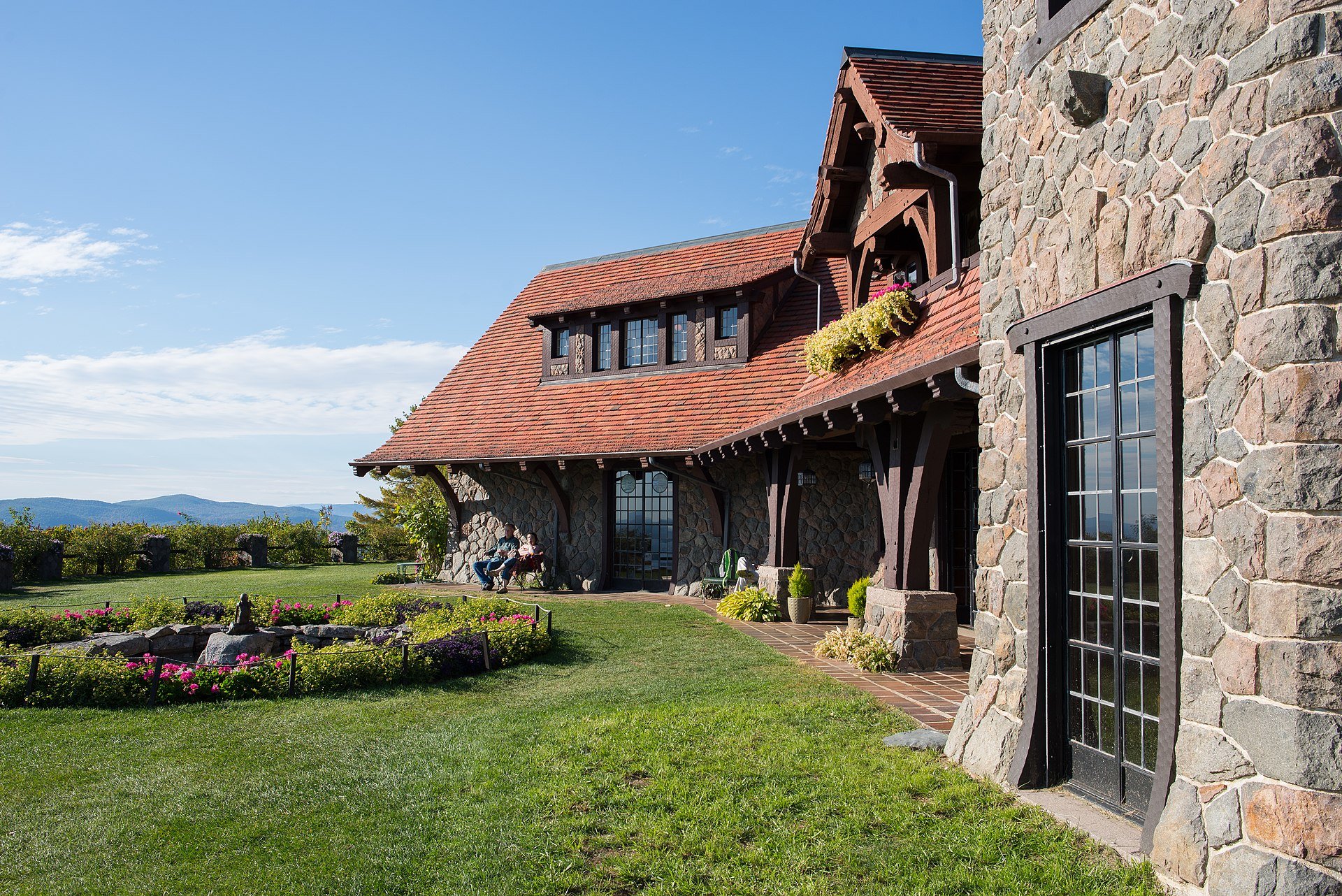
Llewellyn King: Wherein we go cruising for out-of-control tourism
Costa Mediterranea in Argostoli, Greece
— Photo by Kefalonia2015
Huge cruise ship at Bar Harbor, Maine. Cruise ships are increasingly irritating many locals in famous tourist spots in New England in the cruise lines’ May-October season.
Europe reeled this summer from heat, wildfires, migrants and worries about Russia’s war in Ukraine, but also from too much tourism. I know, I was part of the problem.
Tourism is the quick economic fix for poor nations, but it is also important to rich ones — until both get too much of it.
The places everyone wants to visit, often places on bucket lists, are choking on their success. Paris, Britain’s Stonehenge and the Lake District, Ireland’s Ring of Kerry and the jewels of Italy, Florence and Venice, all suffer summer overload.
Things were so bad in Venice this summer that cruise ships had to be waived off. The Greek islands of Santorini, Corfu and Mykonos were, likewise, inundated with cruisers and other tourists.
Yet tourism is vital to many economies. The emerging tourist destinations along Croatia’s Dalmatian Coast are the latest to feel the benefits and problems of tourism. The sites, the roads and the facilities are stretched, but tourism has meant economic well-being for the region, especially as cruise ships have started calling.
Cruise ships, those big – and becoming gigantic — floating palaces overwhelm ports when they anchor, burden infrastructure and deposit lots of lovely money.
Greece and many countries along the Adriatic Sea derive about 25 percent of their GDP from tourism, not the least of it from cruise ships. Cruise ships are very important to any shore community that has ancient ruins, historical and scenic cities, natural wonders — and the Balkan countries have all in abundance.
In early August, my wife and I cruised the Dalmatian Coast and Greek islands. When we booked the cruise, at the last minute, we were fully aware of the tourist pressure on Europe every summer, but learned that it is getting worse.
Most of the Dalmatian Coast is still visitable in summer and hugely rewarding, except for Dubrovnik, which we skipped. It is, I learned, showing stress from over-tourism. The full impact of the cruise ships hasn’t yet begun to wear on the small coastal towns, as it has on the most famous Greek islands.
You can’t pick a Greek islands itinerary in the summer that will avoid seeing too many cruise ships, carrying 2,500 and up passengers, arriving at the same destination at the same time.
Fira, on Santorini, is a fabulous cliff town, except when there are too many visitors going ashore from a flotilla of cruise ships anchored in the harbor.
Five cruise ships arrived at Fira simultaneously, ours among them, and untold thousands of tourists went ashore. To reach the charming town, you must ride a donkey or a cable car. My wife and I love donkeys, so we opted for the cable car. It was chaotic, verging on dangerous. Extraordinarily, the crowds waiting for hours to board the cable cars were well-behaved: no pushing, no audible outrage, just resigned queuing.
Lest you think cruise ships are filled only with Americans, cruising has become a global passion.
Cruisers see the world from the comfort and security of a very large, well-organized hotel that moves with them. They see so much more and take their selfies in so many more places than they could otherwise.
Cruising is big business, and the size of the ship seems not to deter anyone.
Royal Caribbean is about to add its Icon class: They will carry up to 7,000 passengers and 3,000 crew. To merchants and tax collectors they are golden galleons as the visitors spend their doubloons on tours, trinkets, meals and tips.
But over-tourism degrades the picturesque ports, cherished villages, and great structures of the past.
When I see a cruise ship, towering over a town from where history was born, I think: The barbarians arrive in shorts, clutching cameras and cell phones. I may be one of them, but I shall endeavor to avoid high summer in the future.
Llewellyn King is executive producer and host of White House Chronicle, on PBS. His email is llewellynking1@gmail.com and he’s based in Rhode Island and Washington, D.C.
Intriguing indigo
Work by Davana Robedee in her show “As Above, So Below,’’ at 3S Artspace, Portsmouth, N.H., Sept. 8-Nov. 12
She says:
“Indigo dye is an intriguing substance. It strikes a balance between precise science and magical experience. Long before its scientific understanding, indigo was used all over the world for its color, but it was also revered for its magical transformation from green to blue in the dye process. Before knowing that on the molecular level, indigo was bonding with oxygen, it was described as ‘breathing’ as if it were a living entity. Through growing and dyeing with it, I find a place to hold both the spiritual and the scientific. Its place in my practice is symbolic and functional. The same is true for hand-stitched resist shibori as a method of making marks on fabric. It slows down my experience of time and the imagery references my parasomnia hallucinations. It gives rise to two narratives- that I slow down time and a create a magical transformation, or that I bind fabric and use a chemical reaction to create a pattern. Through this I question- are these arcane symbols from a world beyond consciousness, or simply a misfiring of the brain?’’
Portsmouth waterfront in 1917
Always headwinds
Wind-energy lease areas off Massachusetts and Rhode Island as of October, 2022
The Massachusetts Wind Technology Testing Center, in Boston’s Charlestown section.
— Photo by vArnoldReinhold
Adapted from Robert Whitcomb’s “Digital Diary,’’ in GoLocal24.com
It was good to hear that the U.S. Interior Department has approved Revolution Wind’s big (700 megawatts) project, southwest of Martha’s Vineyard. The project could provide electricity for 350,000 homes and create about 1,200 construction jobs.
The department has also approved the Vineyard Wind 1 project, off Massachusetts, the South Fork Wind project, off Rhode Island and New York, and the Ocean Wind 1 project, off New Jersey.
But the regulatory approval process moves at glacial speed, and litigation always threatens to stop such projects in their tracks. Big factors are nimbyism by coastal residents (often led by affluent summer people) who say that they don’t want to look at wind turbines, as well as opposition by some in the fishing sector because of the mostly temporary disruptions in the areas where they’d be installed. Of course, the damage caused by man-made global warming happens everywhere, in varying degrees of severity.
And the supports for offshore turbines act as artificial reefs that draw fish. Wouldn’t fishermen like that?
Installing any energy source creates problems, but let’s make rational comparisons….
The complaints by offshore-wind foes are outstandingly hypocritical. Consider that the fossil-fuel burning that wind power is meant to partly replace poses an existential risk to fishing interests by dangerously warming and acidifying the water and disrupting major ocean currents such as the Gulf Stream. Fossil-fuel burning destroys food sources of marine animals, including whales.
Then there are those pesky oil spills and the disruptions to marine animals by speeding oil tankers.
When you look closely at opposition to coastal and offshore wind projects you see money from – you guessed it! – the oil and gas industry.
Take a look at the stuff in these links:
https://electrek.co/2022/04/18/the-first-us-offshore-wind-farm-has-had-no-negative-effect-on-fish-finds-groundbreaking-study/
https://grist.org/politics/republicans-fossil-fuels-the-gop-donors-behind-a-growing-misinformation-campaign-to-stop-offshore-wind/
‘Visual equivalents’
“Scrip(t) Scraps, Version 1’’ (intaglio, relief prints on player piano scrolls with 5.5’ etched copper parentheses, copper mesh stuffed with shredded paper), by Somerville, Mass.-based artist Randy Garber, in her show “Scrip(t) Scraps,’’ at Kingston Gallery, Boston, Nov. 1-20.
She says:
‘“My work investigates perception and how meaning is deciphered. I have consistently—and persistently—focused on finding ways to visually express both the beauty and vagaries of communication. Profoundly hard of hearing since infancy and acutely aware of the potential for misinterpretation, I explore the spaces between silence and sound: confusion and clarity, chaos and precision.
“Interested in gaps between our five (known) senses and how they inform, influence and intercept one another, I aim to find visual equivalents that suggest the complicated processes in how we receive and make sense of information. I create structures and images that evoke, for instance, cochlea, ear drums, instruments, neural networks and language systems.’’
Chris Powell: Conn. cities can’t save themselves
Vanderbilt Hall at Yale
— Photo by GK tramrunner229
MANCHESTER, Conn.
Yale University's police union seems to have thought last week that it could scare up a better contract by distributing to incoming freshmen a handbill suggesting that New Haven is so dangerous that just leaving their rooms in the university cocoon could get them killed. Crime and violence in New Haven are "shockingly high," the handbill said.
Mayor Justin Elicker and other city officials denounced the union's fear mongering, accused the flyer of inaccuracies, and insisted that crime in the city has been coming down. (It depends on the duration measured.)
It waa hard to see how the flyer made a case for a better contract. But most places are far safer than New Haven.
After all, New Haven has a large impoverished population, has shootings almost every day -- some fatal -- and every month the state's prisons send back to the city dozens of troubled former offenders who soon will return to crime.
If New Haven was as safe as those offended by the flyer want people to believe, the city wouldn't have a "shot spotter" system to hasten police response to the constant mayhem, and Yale would not offer security escorts to students around the clock on campus.
But Yalies recognize the university's urban environment and probably have noticed the deteriorating conditions in many cities. Yale's reputation has induced them to take a risk.
So the controversy over the flyer is worthwhile mainly for the rest of Connecticut, whose social contract long has been to accept disintegration in the cities as long as it can be confined. Since increasingly it cannot be confined, maybe it will be addressed seriously only if it keeps spreading.
For try as they might, the cities aren't equipped to save themselves, being so poor and torn between crime victims and perpetrators, most of each group being city residents. Like every victim, every perpetrator is a disaster for his family.
At a recent meeting, Hartford's City Council noted that serious crime in the city is committed disproportionately by repeat offenders the courts have failed to put away for good or even to bring to any resolution at all, leaving many free on bond for long periods and committing more crimes.
Hartford's police say 73 percent of violent criminals in the city have been arrested before and 79 percent of perpetrators in shootings have already been arrested for other gun crimes. As of a few days ago Hartford had suffered 28 murders this year, a rate higher than last year's, and -- hardly noticed -- 67 people had survived shootings in the city.
This should be an outrage beyond Hartford, but it's not, and the city council has no jurisdiction over repeat offenders or crime generally. It can only appropriate for more police.
The Hartford-area chapter of the National Association for the Advancement of Colored People also has noted rising crime in the city. But its idea is only to alert city residents to the many "resources" available to them, like food pantries. That won't tame wild young men.
Running for mayor, Hartford state Sen. John Fonfara comes closest to the underlying problem.
In an interview this month Fonfara implicitly referred to what is usually unmentionable in Connecticut: child neglect at home engendered by the welfare system and social promotion in school. He cited children who "start school unready, or they couldn't read by third grade and get discouraged. They end up in ninth grade but they're at a sixth-grade or fifth-grade level, and they're too old and they quit. … Maybe they don't have support at home in their neighborhood. Maybe some of their friends are involved in a gang, and then it goes from there."
The remedy Fonfara offered was weak: more pre-school. But at least it was relevant, and it's probably too much to expect a candidate for mayor to ask directly where all this child neglect is coming from in a city that is full of it.
Chris Powell has written about Connecticut government and politics for many years (CPowell@cox.net).
‘Contemplation and curiosity’
Work by Japanese-American and Boston-based artist Yuko Oda, in her show “Entering, Arriving, Departing, at Boston Sculptors Gallery, Aug. 30-Oct. 1.
The gallery says:
“Yuko Oda’s personal history involves lifelong pilgrimages to her homeland of Japan. On a recent trip she visited several shrines and temples, walking through numerous gates and performing rituals such as ringing bells to pay respect and purifying oneself with water. Oda also recently experienced a loss in her family. These events coalesced into the creation of ‘Arriving, Entering, Departing,’ an immersive installation where visitors are invited to remove their shoes, enter, and experience a place of contemplation, curiosity, and wonder.’’
Black Mainer anti-racism hero
“I felt that fighting discrimination was the most important thing I could do as an elected official. I said then and I believe now that any doctrine of superiority is scientifically false, morally condemnable, socially unjust and dangerous.’
— Gerald E. Talbot (born 1931 and one of the few Mainers with an African-American background), civil-rights leader and former state representative from Portland.
An eighth-generation Mainer, Talbot traced his ancestry to black Revolutionary War veteran Abraham Talbett.
Talbot was the first Black state legislator in Maine, the founding president of the Portland chapter of the National Association for the Advancement of Colored People (NAACP), and president of the Maine State Board of Education under Gov. Joseph Brennan. In 2020, the Riverton Elementary School, in Portland, was renamed the Gerald E. Talbot Community School.
Step into versions of the past
Photo by Eileen McCarney Muldoon, in her show “Memory or Imagination: The Work of Eileen McCarney Muldoon,’’ at the Jametown (R.I.) Arts Center, Nov. 9-Dec. 16
Ms. Muldoon, who lives in Jamestown, says of her work:
“I have always been fascinated with how our backstories influence our life. Our past world touches us directly and carves our future. Yet, our memories are blurred and tangled by our own perception and imagination. Even the most precise memory is translated through our own rendering. If I were to transcribe my memories through words, you would have foreclosure. You would be given a narrative, most likely fiction, but nonetheless you would be given my story. Instead, I have used my photographs of dreams, imagination and metaphor to suggest a past world that you too can step into and interpret. My hope is that you connect with these images without insistence and relate to these musings to shine a light into your past world before entering into the unknown journey ahead.’’
Swelling city
This shows the original dimension of the Shawmut Peninsula, on which Boston was first built, staring in 1630. The gray areas marked with the words "New Boston" are the product of the period of filling in mudflats that began in 1803.
Free college education for some Mass. students
Mount Wachusett Community College
Edited from a New England Council report
Quinsigamond Community College, in Worcester, and Mount Wachusett Community College, in Gardner, Mass., are part of the $20 million MassReconnect program that will offer free higher education for certain students.
“The program, which includes all 15 Massachusetts state community colleges, was passed in the state’s 2024 fiscal budget. It will provide students over the age of 25 the opportunity to attain an associate degree at no cost. Intended as a measure to aid working adults, who had passed the perceived age of education, the effort will make the college structure more equitable, and make higher-level degree and certification achievement increasingly realistic for all. It is expected that the plan will significantly improve the academic outlook for young parents, who may have understandably lost chances to attend college under the time constraints of various other responsibilities. In this way, these and other state community colleges give back those lost opportunities, allowing residents to advance their careers and lives, all for free.
“‘The MassReconnect program is a giant step forward in our quest for equity in higher education. By offering equitable opportunities and resources for our students, many of whom are juggling one or more jobs and caring for their families, we are bettering our entire community,’ said QCC President Luis G. Pedraja, ‘Obtaining a higher education is a way for people to advance a career, change careers, and make a better life for themselves and their families.”
“The New England Council commends Quinsigamond Community College and Mount Wachusett Community College for their commitment to equitable and accessible education.’’
At Quinsigamond Community College
— Photo by John Phelan
Only looks like that in the spring
“Chicopee, MA,’’ by Sandra Cohen, in the group show “Bridges,’’ through Sept. 1, at Fountain Street Fine Art, Boston.
The Cabotville section of Springfield, Mass., as it appeared in 1844. Four years later, Cabotville became part of the new town of Chicopee, as industry boomed in the area.
Torch song to send you on your way
In New Haven’s Union Station
— Photo by Grendelkhan
‘The bar in the commuter station steams
like a ruin, its fourth wall open
to the crowd and the fluttering timetables.
In the farthest corner, the television
crackles a torch song and a beaded gown.’'
— From “The Northeast Corridor,’’ by Donald Revell (born 1954), American poet
Return to putting up with it
Inside Boston’s famed Symphony Hall during a concert
“Tonight I will speak up and interrupt
your letters, warning you that wars are coming,
that the Count will die, that you will accept
your America back to live like a prim thing
on the farm in Maine.
I tell you, you will come
here, to the suburbs of Boston, to see the blue-nose
world go drunk each night, to see the handsome
children jitterbug, to feel your left ear close
one Friday at Symphony.’’
— From “Some Foreign Letters,’’ by Anne Sexton (1928-1974), Pulitzer Prize-winning Massachusetts poet
Elements to seek outside
“Light & Breezy” (oil on cradled panel), by New England painter Janis Sanders, at Alpers Fine Art, Rockport, Mass.
He says:
“Salt air, salt spray, sweet smell of summer grass, verdant marsh, an old house at the water’s edge, wind in your hair, sun on your face.
“These elements draw me outdoors, to the grassy dunes of Truro, the calm marshes of the North Shore, to the rugged cliffs of Maine.”
William Morgan: The painting of Gov. Raimondo and the banality of official portraiture
The official Rhode Island State House portrait of Gov. Gina Raimondo, by Patricia Watwood
When Gina Raimondo first ran for governor of Rhode Island, she did not trumpet her gilt-edged education at Harvard, Oxford and Yale, which I thought was admirably modest. When I first met her, I was starstruck. Searching for a topic of non-political conversation, I asked her about her Rhodes Scholarship. Like other old Oxonians, we reminisced about our respective colleges there, New and Jesus. Unlike your average politician, Raimondo was both warm and smart. I was snowed.
No governors will remain universally admired, and none will leave office with their reputations untarnished. Yet Rhode Island’s first female top executive has gone on to become the U.S. secretary of commerce. Raimondo is one of the leading lights of President Biden’s brain trust, and one of the cabinet’s most energetic members.
A snapshot of an unidealized and human Governor Raimondo.
Photo by Will Morgan
Regardless of popularity or accomplishment, all Rhode Island governors, as with governors in other states, are honored by being flash-frozen on the State House walls. With few exceptions, these portraits are sterile and lifeless. The pioneering and dynamic Gina Raimondo deserved a far better tribute than the recently one unveiled by New York figurative artist Patricia Watwood.
The representation here, as so often with official portraits, is wooden and insipid, capturing none of Gina’s spirit. Rather, it looks like a public-relations photo, or perhaps a page from the Talbots catalogue. The pair of flags are beyond trite, fighting for prominence against blue water and a sky with cottony clouds, with the obvious point to remind us that it’s the Ocean State.
Throughout Western art, flowers have been included in portraits for their symbolism, with certain plants alluding to such virtues as innocence, love, constancy and even patriotism. Such allusions might have given the painting a little literary punch. Instead, we have primarily decorative flora, wildflowers that “the residents of Rhode Island would recognize.”
Furthermore, we have Watwood’s unsupportable declaration that she is “celebrating Raimondo’s service and showing young women, girls, the people of Rhode Island that there is a place in leadership at the highest level for all of us.” Without knowledge that Gina was our first female chief executive, how exactly does this painting demonstrate to anyone the advance for women she represented?
“Imago/Imagination” (2013), by Patricia Watwood
—Courtesy of the artist.
Watwood was selected by the Rhode Island State Council on the Arts and the former governor, and yet the St. Louis native and author of a new book, The Path of Drawing, has far more interesting portraits in her portfolio. (Her own self-portrait, for example, in a realist, neo-Renaissance style, intriguingly features a golden bird, a peacock feather, and bright red flower in her hair.)
Watwood is good at her craft, so why weren’t we given her best? Was the painter overwhelmed by the responsibility of an “official” commission? Or maybe she felt that little Old Rhode Island, though only a few hours drive from the New York City art world, would not notice a less than stellar effort, even though the state is the home of what is probably America’s most famous art school, the Rhode Island School of Design (RISD).
Alas, this is yet another disappointing example of what happens when Rhode Island goes out of state for its image procurement (“Cooler & Warmer,” anyone?). No one would begrudge an artist actually making some money, but this bland depiction hardly seems worth $50,000.
It need not be this way. Providence artist Julie Gearan dispensed with the usual fawning hagiography when she painted Gov. Lincoln Chafee’s State House portrait. Gearan, who teaches painting at RISD, created a haunting image of the enigmatic governor without resorting to the usual political stage props. A challenging work of Romanticism, the Chafee portrait earns high marks for composition, color and impact.
Gov. Lincoln Chafee, by Julie Gearan.
Before readers accuse this writer of being unduly harsh about Ms. Watwood’s picture making, I took the liberty of sharing her Gina Raimondo portrait with Prof. Rod Miller, a conservative art historian at Hendrix College who favors traditional representation. He wrote:
“Wow, you were ripped off. It’s like that woman {Margaret Keane} who painted the Big Eyes portraits. Looks like undergraduate work.’’
William Morgan is a Providence-based architectural historian and critic. His new book, Academia: Collegiate Gothic Architecture in the United States, will be published in October.
Complicated backyard
“Backyard” (acrylic, oil, acrylic-based spray paint, paint markers and paper on canvas), by Bob Dilworth, in his show “Bob Dilworth: Backyard’’ at the Newport (R.I.) Art Museum through Dec. 31.
Partial gift of Dr. Joseph A. Chazan and partial museum purchase. Photo courtesy Newport Art Museum.
The museum says:
“Dilworth ‘draws on the memories and experiences from the [his] life in Providence and home of Lawrenceville, 50 miles south of Richmond, Virginia.; Dilworth describes his artwork as tackling ‘issues of race, culture, ethnicity, family, myths, folktales, and religious beliefs through metaphor and allegory." ‘
Towering but playful
Hyunsuk Erickson, “Thingumabob Society’’ (ceramic and textile), by Hyunsuk Erickson, at Burlington (Vt.) City Arts through Sept. 17
— Photo by Renee Greenlee
The gallery says:
“Hyunsuk Erickson explores ideas of materiality, resourcefulness, and identity in her whimsical installation Thingumabob Society. Comprised of multi-colored, organic forms that tower in size, spring from the wall, or gather in groups, Erickson’s oddly shaped and playful sculptures suggest sprouting seeds or family groupings.
“The artist creates her Thingumabobs by merging sculpture and craft traditions. Using plastic, yarn, and found fabric, she crochets and weaves over and around more durable materials such as ceramic to produce animated and joyful forms.
“Drawing upon memories of her family’s farm in Korea with those of motherhood and family in the United States, Erickson’s creations explore the cyclical nature of life, the waste of consumer culture, and the hybrid nature of her Korean and American identity. In Thingumabob Society, the artist fashions an imaginative and hopeful space that invites us to collectively reflect on relationships – between nature, culture, and ourselves.’’
Llewellyn King: Fall down before a Frankenstein deity
How deep learning is a subset of machine learning and how machine learning is a subset of artificial intelligence
— From British Wikipedia
WEST WARWICK, R.I.
Those who work with language have reason to worry about the effect of artificial intelligence and its awesome skill with words.
You can, for example, ask ChatGPT to write an article on almost any subject, and it will mostly come back with something ready for the page, untouched by a human editor. If you want it in Washington Post style and it is in Guardian style with British spelling, faster than you can type in the request, it will reformat the article into the style and usage you want and, presto, it is ready to print or publish digitally.
Writers, lawyers and college professors will feel the sting first. Writers in Hollywood are on strike because of the threat posed. College professors are going into the new term unsure whether they will deal with original work or whether students are substituting AI-generated essays and theses.
Journalists, already reeling from the closure of so many newspapers, are wondering about their future.
But what about religion?
AI ramifications in organized religion are good and bad. In fringe religions and cults, it will be open season on worshipers. And some will find comfort in speaking to God as though the Almighty is resident in AI.
On the good side, many pastors approach Sunday in trepidation. The sermon, which is supposed to be instructional, uplifting and erudite, is a source of torture to those who aren’t good writers or have difficulty sharing their own faith with the congregation.
There are newsletters to help sermon writers and a wealth of diocesan support. Still, sermons are a trial for many pastors. You can read an old sermon or plagiarize another cleric, but that leaves sincere preachers feeling they are cheating and letting their congregants and their mission down.
Enter AI. By feeding a few thoughts to a chatbot, a polished sermon incorporating some of the preacher’s ideas appears almost instantly.
This hasn’t been wasted on the established churches, I learn from the BBC. The churches are looking at ways of embracing AI, using it as a tool, a gift to help with preaching and pastoral work, comforting the sick, composing notes of sympathy, and research.
The rub comes when people, as some surely will, confuse concepts of God with AI simulations and start to think that AI is a deity.
It has the characteristics usually associated with a deity: ubiquitous and seemingly all-knowing.
Indeed, it may claim to be a god if it hallucinates, as it sometimes does. What, then, for the unsuspecting? Do they fall to their knees?
I asked ChatGPT, and it sent me a 10-point list of the possibilities, noting that it is a subject that is complex and evolving.
These three points are scary:
—“Customized Spiritual Experiences: AI algorithms could be designed to tailor spiritual experiences to individual preferences and beliefs. These experiences might include personalized prayers, meditation sessions, or virtual pilgrimages, designed to resonate with each person’s spiritual inclinations.”
—“Ethical Dilemmas and Moral Guidance: AI might be used to explore complex ethical questions and provide guidance based on religious teachings. For instance, AI systems could analyze various religious perspectives on a given moral issue and help individuals navigate their choices.”
—“Exploration of Spirituality and Philosophy: AI’s ability to process vast amounts of information could be harnessed to delve deeper into philosophical and spiritual questions, potentially offering new perspectives on the nature of existence, consciousness and the divine.”
Would it be safe to call it Frankenstein worship?
On Twitter: @llewellynking2
Llewellyn King is executive producer and host of White House Chronicle, on PBS.
Dartmouth Hall at the eponymous college in Hanover, N.H.
Editor’s note. This is from the Council of Europe:
“The term ‘AI’ could be attributed to John McCarthy of MIT (Massachusetts Institute of Technology), which Marvin Minsky (Carnegie-Mellon University) defines as ‘the construction of computer programs that engage in tasks that are currently more satisfactorily performed by human beings because they require high-level mental processes such as: perceptual learning, memory organization and critical reasoning. ‘ The summer 1956 conference at Dartmouth College (funded by the Rockefeller Institute) is considered the founder of the discipline. Anecdotally, it is worth noting the great success of what was not a conference but rather a workshop. Only six people, including McCarthy and Minsky, had remained consistently present throughout this work (which relied essentially on developments based on formal logic).’’
Summits in style
The former Weeks Estate, now a state park, atop Prospect Mountain in northern New Hampshire
Text from Robert Whitcomb’s “Digital Diary,’’ in GoLocalProv.com
There seems to have been something of a fad among rich New Englanders in the first decades of the last century to build mansions, mostly as summer places, on the top of mountains, despite the obvious inconveniences. There’s Beech Hill Farm, in Dublin, N.H. (once used as a fancy drying-out spa); Castle in the Clouds, now a museum, on Lee Mountain, Moultonborough, N.H., and the Weeks Estate, which includes a mansion museum, on the top of Prospect Mountain, in Weeks State Park, in Lancaster, N.H. I visited the park the other week with a friend connected by marriage to the Weeks family.
The house, built by Lancaster native John Wingate Weeks (1860-1926), an investment-business mogul and important Massachusetts and national political and government figure, has a treasure trove of historical information. The main house, finished in stucco, somewhat eccentrically combines the Tudor and Spanish Mediterranean Revival styles. The interior is quirky too, with a huge top room with a pool table in the middle surmounting what had been remarkably small bedrooms below. And of course there are antlers on the wall.
The views from the estate and on the road up are spectacular.
Just nosing around New England can provide lots of pleasant surprises.
Castle in the Clouds



